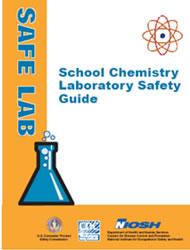| |
Appendix
Appendix A. Common Safety Symbols
Appendix B. National Fire Protection Association Hazard Labels
Appendix C. Substances with Greater Hazardous Nature
Than Educational Utility
Appendix D. Substances with a Hazardous Nature,
But May Have Potential Educational Utility .
Appendix E. Incompatible Chemicals
Appendix F. Recommended Safety and Emergency Equipment
for the Laboratory
Appendix G. How Does a Chemical Enter the Body?
Appendix I. General Guidelines to Follow in the Event of a Chemical Accident or Spill
Appendix J. Understanding an MSDS
Appendix K. Sample MSDS
Appendix L. Web Site Resources
Appendix M. Glossary
Appendix H. What Are Exposure Limits?
Exposure limits are intended to protect workers from excessive exposure to hazardous
substances:
- Established by health and safety authorities and chemical manufacturers
- Department of Labor’s Occupational Safety and Health Administration
(OSHA)
- American Conference of Governmental Industrial Hygienists (ACGIH)
- National Institute for Occupational Safety and Health (NIOSH)
- Environmental Protection Agency (EPA)
- American Industrial Hygiene Association (AIHA)
- Define the amount/concentration to which a worker can be exposed without
causing an adverse health effect.
- Typically pertain to the concentration of a chemical in the air, but may also define limits for physical agents such as noise, radiation, and heat.
- Usually can be found on the MSDS; make sure your MSDSs are up-to-date.
Exposure Limits
Legally Enforceable Limits
Permissible Exposure Limits (PELs)
- Set by OSHA, 29 CFR 1910.1000, and 1910.1001 through 1910.1450.
- Specifies the maximum amount or concentration of a chemical to which a worker may be exposed.
- Generally defined in three different ways
- Ceiling Limit (C): the concentration that must not be exceeded at any part of the workday
- Short Term Exposure Limit (STEL): the maximum concentration
to which workers may be exposed for a short period of time (15 minutes)
- Time Weighted Average (TWA): the average concentration to which workers may be exposed for a normal, 8-hour workday
Other U.S. Exposure Limits
Threshold Limit Values (TLVs)
- Prepared by ACGIH volunteer scientists
- Denotes the level of exposure that nearly all workers can experience without an unreasonable risk of disease or injury
- An advisory limit; not enforceable by law
- Generally can be defined as ceiling limits, short term exposure limits, and/or time-weighted averages
- Usually equivalent to PELs
Recommended Exposure Limits (RELs)
- Recommended by NIOSH
- Indicates the concentration of a substance to which a worker can be exposed for up to a 10-hour workday during a 40-hour work week without adverse effects, however, sometimes based on technical feasibility
- Based on animal and human studies
- Generally expressed as a ceiling limit, short-term exposure limit, or a time-weighted average
- Often more conservative than PELs and TLVs
Workplace Environmental Exposure Limits (WEELs)
- Developed by AIHA volunteers
- Advisory limits; not enforceable by law
- Typically developed for chemicals that are not widely used or for which little toxicity information is available
Company-Developed Limits
- Developed by company scientists
- Advisory limits; not enforceable by law
- Usually based on only short-term studies of animals
- Generally intended for internal company use and sometimes for the customers
|  |
|


